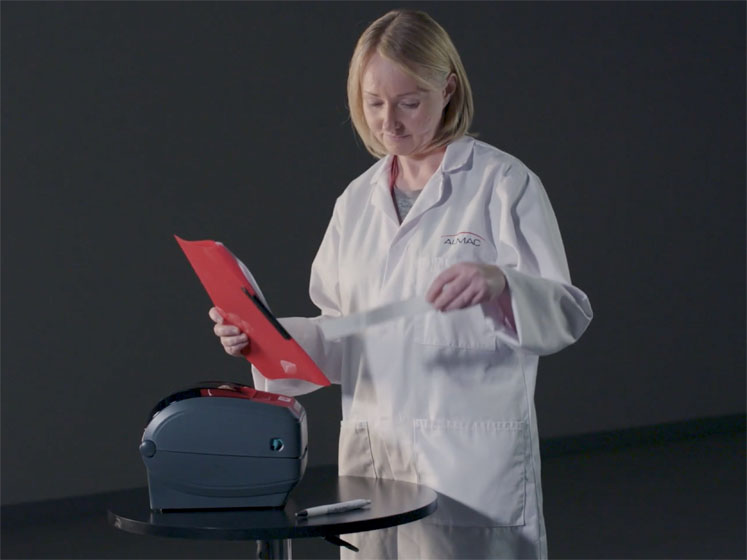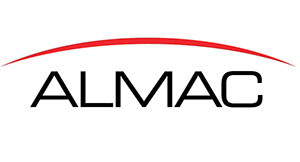Having addressed some of the fundamentals of JTM in part I and how COVID-19 is affecting the global pharmaceutical industry, I ask whether — vaccine or not — there might be an issue with the raw materials at the front end of the supply chain and whether Almac’s service could provide a way to compensating for any shortcomings.
“With cell and gene therapy,” says Mark, “you’re dealing with very small amounts of material and one donor. If you’ve identified the person and the patient, you pretty much have the raw materials you need, but that’s not going to be appropriate for every treatment or every trial.”
“If bulk drug is already limited in stock and raw materials are further degraded, then the reservoir is only going to continue to be depleted.” Natalie adds: “That’s when JTM becomes much more critical. You know for some clients, as Mark has said, that there’s a patient on the other end."
"Others take the approach that they’re not only going to address that particular patient’s need, but also maybe send a back-up kit or two … just in case. But, in the ongoing situation, it might not be possible to supply additional ‘just in case’ supplies; therefore, clients may need to implement an order-to-patient ticket that gets delivered in a just-in-time fashion.”

Mark Rohlfing
Mark agrees, commenting: “Fortunately, in the pharmaceutical industry, many countries have recognised that we’re an essential business and, obviously, people need medicines, whether it’s for COVID-19 or some other chronic or temporary illness that they have right now."
"So, what we’ve seen, both in the clinical side and in the commercial side, is that any supply chain concerns are being addressed all the way down to the raw materials, which is fortunate. Long term, who knows? If this pandemic continues, there could be greater stress on the healthcare supply chain, including pharmaceuticals, which would then eat into those supplies that are already sitting on shelves at places such as Almac."
"Having the flexibility of a just-in-time model, with which you’re able to divert those supplies based on your immediate needs, is just another tool for our customers to utilise.”
Regulatory hurdles
Tackling another thorny issue, given Big Pharma’s inherently conservative nature, I wonder if legislation has been an issue or whether are the industry has been keen to adopt JTM. “How much time do we have?” laughs Mark. “Initially, we had concerns because most clinical sponsors had never considered using a JTM model. In the past, it just wasn’t available,” he explains.
“Sure, the pharmaceutical industry is conservative; but, most of that is because of the critical nature of what we do, as well as the good manufacturing practices (GMPs) and the guidelines that we have to comply with, no matter which country you’re working in."
"A lot of those GMPs have been developed with batch manufacturing in mind; so, when you start talking about manufacturing on demand, people want to know whether processes, controls and regulations are in place to support it. As such, we spent a lot of time conducting risk assessments and talking with customers to show them how you could apply current standards to a JTM model.”
“For a lot of the regulators we work with, in Europe, Asia and the United States, it’s new to them as well. Most of them have not seen JTM being utilised for pharmaceutical products before, so there’s been an education process. Recently, for example, we had the fortunate opportunity to work with the Irish Health Products Regulatory Authority in our new facility in Dundalk and take them through the just-in-time manufacturing process."

Natalie Balanovsky
They looked at the space, they looked at the procedures and the controls, including the qualified person (QP) release process, which is significant. Each JTM batch has to be released independently through the QP. And we were very pleased that their audit report found no deviations or concerns and that all aspects were found to be ‘acceptable’”
“That was a big part of the process,” continues Mark: “We wanted to ensure that our sponsors were happy with the set-up, as well as our customers’ QPs … and the regulators."
"We’re very pleased that people have actually come onboard very quickly, they’ve seen how it works — particularly by putting upfront efforts into the review process, into the primary manufactured supplies, doing all the checks and balances — so that they’re really just looking at the final manufacturing stage that we do before the supplies are finally released and sent off to patients.”
“We’re convinced that, as more regulators and more customers get comfortable with JTM as a practice, it’s going to be used more and more across a wider range of pharmaceutical products,” he concludes.
Personalised and precise
At the same time, I suggest, as healthcare advances towards more personalised, less broad-scale therapies, the industry will need to look at smaller population groups and, hopefully, turn around pharmaceuticals in a shorter period of time.
“Absolutely yes,” confirms Natalie: “Precision medicine and the move away from one-size-fits-all blockbuster drugs means that we’re focussing specifically on the individual patient and trying to address their particular needs based on, as Mark said, specific biometrics.”
“These types of studies seem to be rolling through the clinical process much quicker and getting to the point of approval by the US FDA or the EMA because they’re seeing fewer and fewer negative results — basically because they’re targeting the needs of a single, specific patient. You can’t provide that service in a batch-based manufacturing environment.”
“With personalised medicine, you’re able to really address the patient’s needs and make clinical kits that are specific to the individual … and dose according to weight or other metrics that you’ve captured during the clinical process. So, I agree with you! As we shift more and more to that type of treatment, there’ll be a greater need for an on-demand, pull-through strategy as opposed to pushing a bulk load of fit-for-everybody supplies.”
In summary
As well as being able to initiate studies faster with JTM, particularly in light of COVID-19, changes in regulatory requirements, amending label texts or expiration dates, Mark and Natalie were keen to emphasise the inherent flexibility of Almac Adapt.
“The whole idea of patient centricity throughout the entire drug development and clinical trial process, is about recognising the individual needs of patients and trying to make it easy for them to join studies, improve enrolment and make their experience the best that it can be during the weeks, months and in, some cases, years that they’re a part of that study,” says Natalie.

“With just-in-time manufacturing, you can personalise those kits now, wait until the patients are onboard and provide them in a single language as opposed to those clunky booklet labels; you can configure the kits in a certain way for a particular patient."
"Furthermore, another concept that has been in minimal use up until now, but has recently gained significant momentum, is a direct-to-patient (DTP) distribution model. If patients can’t make their way to clinical sites, because they’re not allowed to travel, how do you get those medicines to the patients in their home? It’s something that’s been discussed at length, but not implemented at scale.”
Natalie concludes: “Now, however, with COVID-19, we’ve fielded quite a bit of interest from sponsors who want to utilise a DTP distribution model to get those supplies from Almac directly to the patient — without actually going through the clinical site. With JTM, we can make a kit on demand and ship it on demand, directly to the patient site."
By doing so, we’re dramatically shortening the supply chain, which we think is something that will offer benefits long after COVID-19. Hopefully, such a solution is not too far in the future, as sponsors are already realising the benefits of getting supplies directly to patients and avoiding a long, convoluted supply chain.” It may be too soon to see Almac-branded drones landing in the front garden, but anything’s possible.

